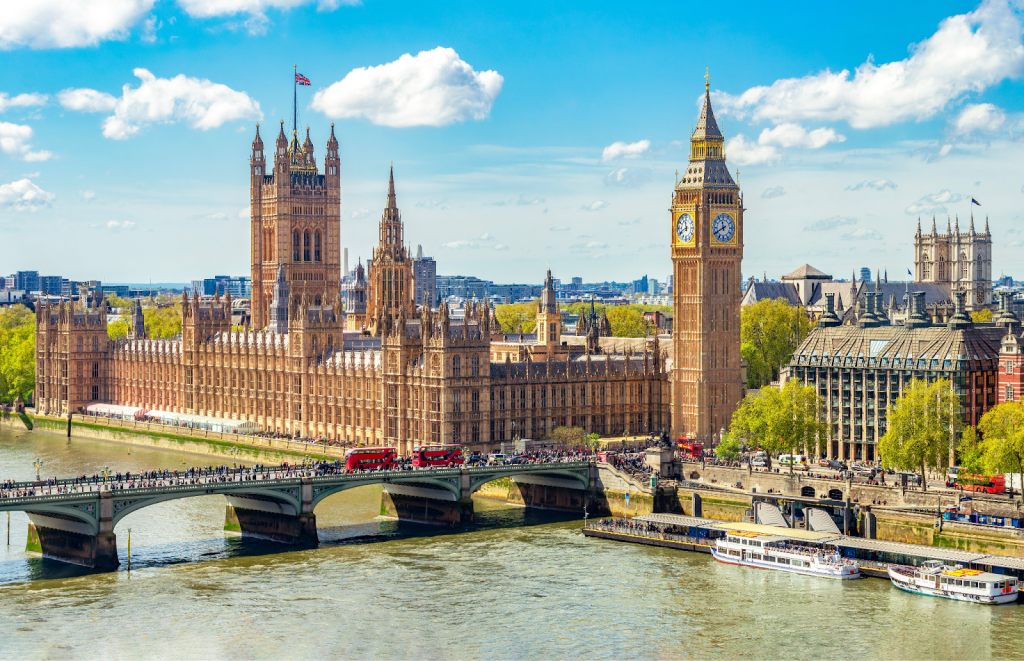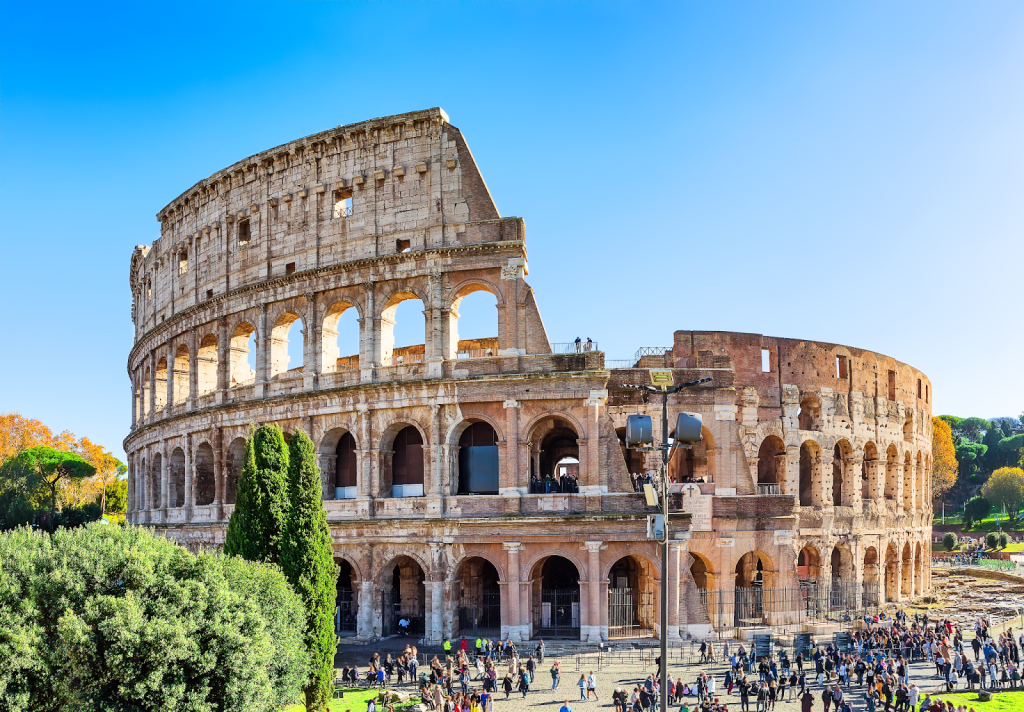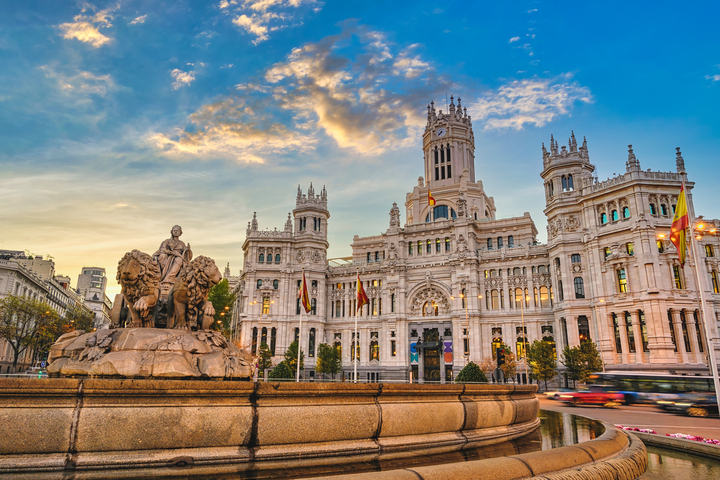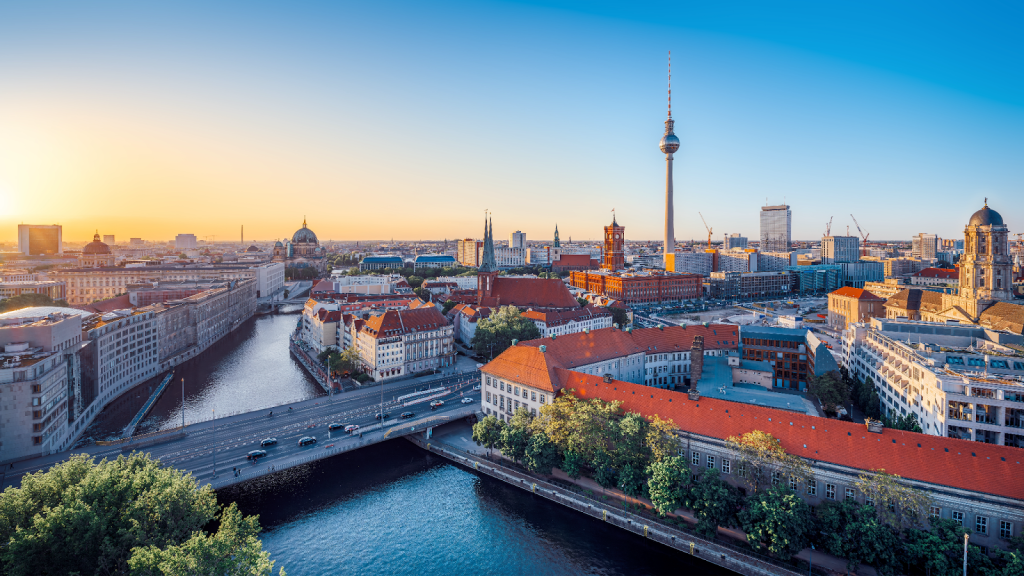Cinematic Cities: the European Capitals Where the Most Movies Are Filmed

London is the most cinematic European capital city, with 214 major movies filmed there over the last five years
- Blockbuster movies released over the last five years that were filmed in London collectively earned a staggering $6,081,121,382 (£4,655,676,124) in global box office revenue
- Movies filmed in Berlin have the highest average IMDB rating overall, at 6.6
- All of the most popular European cities for filming offer tax rebates on production costs incurred in the country
- We asked our Travel insurance expert Alvaro Iturmendi to offer his tips around key factors to consider before your trip to these cinematic cities
From the romantic streets of Paris to the ancient landmarks of Rome, Europe has served as a backdrop for countless films. Its rich culture, iconic attractions, diverse landscapes and wealth of established film studios make it a treasure trove for filmmakers. Experts at Confused.com travel insurance have uncovered which European capital cities are the most popular blockbuster filming locations.
- London
London was crowned the ultimate filming hotspot out of all European capital cities, with 214 films (with over 1,000 ratings on IMDB) shot over the last five years. Films shot in London that were released in cinemas collectively earned a staggering $6,081,121,382[1] in global box office revenue.
If you want to see the city through the lens of your favourite characters, some sites to visit include Warner Bros. Studios just outside London. Most famously recognised as the home of Harry Potter, the studio has also hosted other renowned movies like Barbie, Wonder Woman 1984 and The Witches. For more niche filming spots, you could visit Liberty in Carnaby, where one of Disney’s most notorious villains, Cruella, got her dream job. Or Whitehall Court, in the City of Westminster where James Bond iconically steps out of his Aston Martin in No Time to Die.
London’s wealth of historic architecture and iconic landmarks make it a prime filming spot. It’s also home to a number of the largest established studios in Europe, such as 3 Mills Studios and Pinewood Studios. To incentivise film production, the UK government offers a tax relief system. To be eligible for the tax relief, film makers have to produce ‘culturally British films’ that get released in commercial cinemas. Film makers can then enjoy a quarter of their UK production expenses back if they follow this system[2].
- Paris
Paris takes the spot as the second most popular filming location, at 132 movies with the majority (64%) of films shot being dramas.
Some of Paris’ most recognisable landmarks have stolen the spotlight in recent movies. These include the Louvre Museum which features in Red Notice. Château de Vaux-le-Vicomte which is just outside the City also makes an appearance. You can see the exterior of the building in Murder Mystery 2. The Basilica Of Sacré-Coeur is used in John Wick: Chapter 4 too.
The city’s character, charm and distinct architecture has long captivated filmmakers. France similarly incentivises filming in the country with a tax rebate of up to 30%, granted by the CNC (French National Center for Cinema, TV and the moving image). Eligibility criteria includes shooting for at least 5 days in France[3].

- Rome
Rome’s rich history, with ancient ruins dotted around the city make it an appealing film set. 78 movies were filmed in Rome, which were predominantly a mix of drama (55%) and comedy (31%). Rome offers a tax incentive on production costs of 40% for international productions and 15-30% for domestic productions[4].
Some cinematic sites to visit in Rome include:
- The Spanish Steps featured in Mission: Impossible – Dead Reckoning Part One
- Castel Sant’Angelo which appeared in Red Notice
- The Coliseum from Godzilla x Kong: The New Empire
Rome is also home to the biggest film production facility in Europe, Cinecittà Studios[5], where tours are available for film lovers.

- Madrid
Madrid takes the spot of the fourth most popular city for filming in Europe, at 57 films. The films shot in the Spanish capital were mainly a mix between drama (46%) and comedy (42%).
There are cases of Madrid serving as a discreet film set, where locations have been transformed to look like somewhere else. You might not realise that some well-known films have been shot there. For example, in Terminator: Dark Fate, the neighbourhoods of Lavapiés and Pueblo Nuevo were used to represent Mexican towns. Also, to create Wes Anderson’s Asteroid City, a farm field about 50 km outside of Madrid was reimagined into the Western American desert.
The city is a popular filming destination due to its connectivity, with an extensive high speed train network[6]. Madrid also has a warm climate, boasting an average of 2769 hours of sunshine per year[7]. Following the pandemic, the Spanish government recognised the film industry’s potential to help economic recovery[8]. Since then, the country has become a hub for film production. The government incentivises it through tax reductions for expenses incurred on Spanish territory[9].

- Berlin
Madrid was closely followed by Germany’s vibrant capital Berlin, film makers made 47 movies here. The top genres of these films were drama (60%) and action (28%). The films shot here had the highest average IMDB rating overall out of all five cities, at 6.6.
Berlin is home to the oldest large-scale film studio in the world, Studio Babelsberg, which opened in 1912 just outside the city. The studio isn’t open to the public, but the nearby Filmpark Babelsberg is a hotspot for film fanatics.It hosts a range of movie related activities and attractions.
Just like all the other top European filming locations, film makers can claim a tax incentive in Germany. Berlin’s German Federal Film Fund offers a tax rebate of up to 20% of production costs incurred in Germany. That’s as long as filmmakers use at least 25% of the budget there[10].
If you are planning a trip to any of these cinematic cities, travel insurance expert Alvaro Iturmendi at Confused.com shares top tips on European travel:
- “Plan your transport: If you’re planning to explore the location you’re travelling to, it’s important to research transport options ahead of time. Familiarise yourself with the local transport network. Look at the available destinations and running times, so you aren’t caught off guard or get lost or delayed.
- “Make sure your passport is valid: Following Brexit, the European Union introduced new passport rules for British passport holders. The passport must be issued less than 10 years before the date you enter the country. It must also be valid for at least three months after the day you plan to leave. To quickly check if your passport is valid for your trip, you can use Confused.com’s new passport checker tool.
- “Ensure you have the right cover: The Global Health Insurance Card (GHIC) has replaced the European Health Insurance Card (EHIC). But your current EHIC is still valid until its expiration date. These allow you to get state healthcare for free or at a reduced rate. However, since most European countries don’t have free medical care like the UK, additional travel insurance is an important consideration to cover any potential costs. Travel insurance also protects you financially for delays or cancellation as well as if your belongings are lost or stolen.”
Related
Brits forced to pay fee to visit these 30 countries…
UK tourists will be required to pay a fee to visit 30 countries in Europe under new European Union (EU) travel rules.The rules mean British holidaymakers will n
The beautiful European island with just 148 locals
Irakleia is a beautiful island in the Minor Cyclades of Greece, nestled in the heart of the Aegean Sea and just an hour away from Naxos. Officially recorded t
Warning issued for Brits flying easyJet and Ryanair to popular…
Passengers flying with Ryanair, easyJet and British Airways should expect disruption (Picture: Urbanandsport/NurPhoto via Getty Images) Passenge










